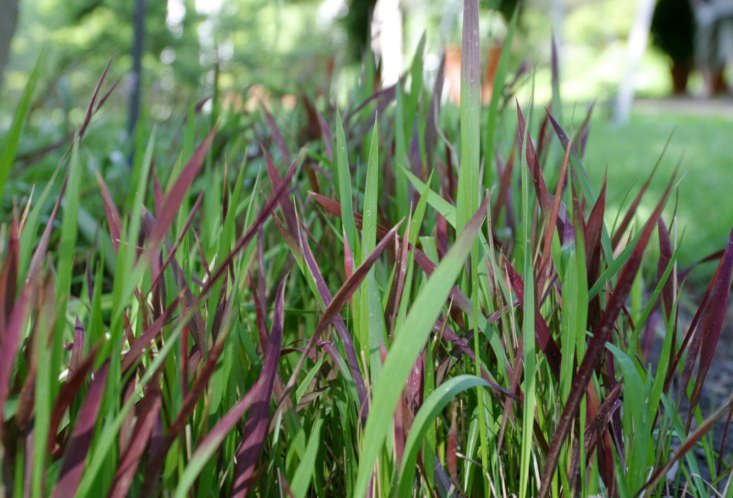Japanese Bloodgrass, Imperata cylindrica: A Study in Scarlet
Striking, fiery, and red are probably not the words that come to mind when you think of perennial grass. But this is exactly what you get with Japanese bloodgrass. Its highly ornamental foliage deepens in color over the course of a growing season, from a pink tinge in spring to show-stopping scarlet in autumn.
But be careful when adding Imperata cylindrica to your garden—and make sure you buy the red variety to avoid adding an invasive species to your landscape. And remember, this distinctive grass is not for the timid gardener. You must love red and you must appreciate plants that are eye-catching and brazen.
Read on to learn if Japanese bloodgrass is right for your garden:

Native to Japan, Japanese bloodgrass has earned a bad reputation in some circle because of invasiveness. Let’s clear the air: the red variety is not the problem. Green-leafed Imperata cylindrica is the problem. The green species is an extremely invasive weed, and so much that it has been banned or quarantined in some southern US states. The problem arises in warmer regions, where the grass spreads rampantly through rhizomes and self-seeding and bullies other species. Reportedly, it is less aggressive in cooler climates and when not allowed to revert back to green.

The red-leaved variety which is considered non-invasive typically is sold under the names ‘Red Baron’ or ‘Rubra’. The highly decorative foliage of Japanese bloodgrass grows up to 2 feet high and wide with s slightly red-tinged and bright green blades in springtime. The color on the top of the foliage intensifies to a brilliant cranberry-red before deepening to crimson in the fall before going dormant in winter months.

Japanese bloodgrass is a cool-season, low-maintenance grass with few pests or problems. The biggest issue is when the plant is sited incorrectly. It prefers cool, moist, and sunny locations and tends to revert to green and exhibit invasive tendencies in full shade, which makes it a potential hazard to other plants.
Tip: Watch for green reversions and remove immediately. If you are concerned, you can always plant Japanese bloodgrass in a container and be equally as happy.

Cheat Sheet
- Whether used as a border, ground cover or edging plant, Japanese bloodgrass will thrive. Also suitable for containers.
- Japanese bloodgrass attracts butterflies but thankfully not deer.
- Repeat clumps of grasses to draw your eye forward through a bed and provide a sense of rhythm and continuity. Or plant in groups to produce a sweeping effect.
- Near translucent red foliage, Japanese bloodgrass can be especially attractive in the landscape (especially when backlit by early morning or late afternoon sun).
- I. cylindrica is a good companion plant for other upright perennials such as black-eyed Susan or orange Echinacea.

Keep It Alive
- Plant Japanese bloodgrass in full sun for the most vibrant color.
- Moist but well-draining soil is needed to avoid root rot.
- Established plants can tolerate less water, but for the best appearance water weekly. Tip: Reduce water during its dormant winter period.
- Avoid cutting back Japanese bloodgrass until early spring (before new growth begins). At that time, cut back bloodgrass to the ground or simply give it a haircut to remove winter damage.
See more growing tips in Japanese Bloodgrass: A Field Guide to Planting, Care & Design in our curated Garden Design 101 guides to Grasses 101. For more ways to use ornamental grasses in a landscape, see:
- Leaves of Grass: 9 Ways to Create Curb Appeal with Perennial Grasses
- Expert Advice: 8 Tips for a Meadow Garden from Grass Guru John Greenlee
- The Bostonians: A Modern Agrarian Landscape in New England








Have a Question or Comment About This Post?
Join the conversation